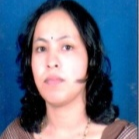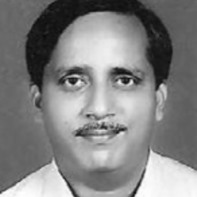International Journal of Intelligent Systems and Applications (IJISA)
IJISA Vol. 6, No. 12, 8 Nov. 2014
Cover page and Table of Contents: PDF (size: 531KB)
Devanagri Handwritten Numeral Recognition using Feature Selection Approach
Full Text (PDF, 531KB), PP.40-47
Views: 0 Downloads: 0
Author(s)
Index Terms
Ensemble, MLP, Feature Selection, MRMR, MI
Abstract
In this paper novel feature selection approach is used for the recognition of Devanagri handwritten numerals. The numeral images used for the experiments in the study are obtained from standard benchmarking data-set created by CVPR (ISI)Kolkata. The recognition algorithm consists of four basic steps; pre-processing, feature generation, feature subset selection and classification. Features are generated from the boundary of characters, utilizing the direction based histogram of segmented compartment of the character image. The feature selection algorithm is utilizing the concept of information theory and is based on maximum relevance minimum redundancy based objective function. The classification results are obtained for a single neural network based classifier as well as for the committee of Neural Network based classifiers. The paper reports an improvement in recognition result when decision combiner based committee is used along with class related feature selection approach.
Cite This Paper
Pratibha Singh, Ajay Verma, Narendra S. Chaudhari, "Devanagri Handwritten Numeral Recognition using Feature Selection Approach", International Journal of Intelligent Systems and Applications(IJISA), vol.6, no.12, pp.40-47, 2014. DOI:10.5815/ijisa.2014.12.06
Reference
[1]P Langley and A L Bium, "Selection of Relevant Features and Examples in Machine Learning.," Artificial Intelligence, vol. 97, Artificial Intelligence, no. Artificial Intelligence on Relevance, pp. 245–271, 1997.
[2]Guyon Isabelle and Andr'e Elisseff, "F, 2003. An introduction to variable and feature selection," Journal of Machine Learning Research, 3, pp. 1157–1182., 2003.
[3]A. Jain and D. Z Guyon, "Feature selection: Evaluation, application, and small sample performance," IEEE Transactions on Pattern Analysis and Machine Intelligence, vol. 19, no. 2, pp. 153–158, 1997.
[4]John Kohavi and Ron H George, "Wrappers for feature subset selection," Artificial Intelligence, vol. 97(1–2), pp. 273–324, 1997.
[5]I.K. Sethi and B. Chatterjee, "Machine Recognition of constrained Hand printed Devnagari," Pattern Recognition(9), pp. 69-75, 1977.
[6]O. V. Ramana Murthy and M. Hanmandlu, "“Fuzzy Model Based Recognition of Handwritten Hindi Numerals," in Intl.Conf. on Cognition Recognition, 2005, pp. 490-496.
[7]N Sharma, U Pal, F Kimura, and S. Pal, "Recognition of Off-Line Handwritten Devnagari Characters Using Quadratic Classifier," in ICVGIP 2006, LNCS 4338, 2006, pp. 805 – 816.
[8]Reena Bajaj, Lipika Dey, and S Chaudhary, "Devnagari numeral recognition by combining decision of multiple connectionist classifiers," Sadhana, Vol.27, part. 1, pp. 59-72, 2002.
[9]B. B. Chaudhuri, R. Ghosh and M. Ghosh U. Bhattacharya, "On Recognition of Handwritten Devnagari Numerals," in ”, In Proc. of the Workshop on Learning Algorithms for Pattern Recognition (in conjunction with the 18th Australian Joint Conference on Artifici.
[10]P. V. Rajan and S. V. Rajashekararadhya, "Efficient Zone based feature extraction method for handwritten numeral recognition of four popular south Indian scripts," JATIT 2005-2008.
[11]P.S. Deshpande, L. Malik, and S. Arora, "Fine classification and Recognition of Handwritten Devnagri characters with regular expressions and minimum edit distance method," Journal of ComputersVol.3 No 5, may2008.
[12]U. Battacharya and B. B. Chaudhari, "Handwritten numeral databases of Indian scripts multistage recognition of mixed numerals," IEEE Trans. Pattern Analysis Machine Intelligence, vol. 31(3), pp. 444-457., 2009.
[13]Satish Kumar, "A Three Tier Scheme for Devanagari Hand-printed Character Recognition," in World Congress on Nature & Biologically Inspired Computing, 2009, pp. 1016-1021.
[14]Ved Prakash Agnihotri, "Offline Handwritten Devanagari Script Recognition," I.J. Information Technology and Computer Science, MECS Press, vol. V-4, pp. 37-42, July 2012.
[15]P. Singh, A. Verma, and N. S. Chaudhari, "Performance Evaluation of Classifiers Applying Directional Features for Devnagri Numeral Recognition," AMR , Smart Nano systems, vol. 403-408, pp. 1042-1048, 2012.
[16]A. Kawamura et al., "On-Line Recognition of Freely Handwritten Japanese Characters Using Directional Feature Densities," in 11th IAPR conference in Pattern Recognition Methodology and systems, 1992, pp. 183-186.
[17]A Belanche, L Nebot, and C Molina, "Feature selection algorithms: a survey and experimental evaluation," in 306 - 313, IEEE International conference on data mining, pp. 306 - 313.
[18]Aarti Bhalla and R. K. Agrawal, "Microarray Gene expression Data classification using less gene expression by combining feature selection methods and classifiers," I.J. Information Engineering and Electronic Business, vol. V5, pp. 42-48, November 2013.
[19]C. E., & Weaver, W. Shannon, The mathematical theory of communication. Urbana, IL: University of Illinois Press., 1949.
[20]Hanchuan Peng, Fuhui Long, and Chris Ding, "Feature selection based on mutual information: criteria of max-dependency, max-relevance, and min-redundancy," IEEE Transactions on Pattern Analysis and Machine Intelligence, vol. 27, no. 8, pp. 1226-1238, 2005.
[21]H. Demuth and M. Beale. (1998) Mathworks Natick, MA, USA.
[22]J. Kittler, M. Hatef, and R.P. W. Duin, "On combining classifiers," IEEE Transactions on Pattern Analysis and Machine Intelligence, vol. 20, no. 3, pp. 226-239, 1998.
[23]Tarun Jindal and Ujjwal Bhattacharya, "Recognition of Offline Handwritten Numerals Using an Ensemble of MLPs Combined by Adaboost," in Proceedings of the 4th International Workshop on Multilingual OCR, Washington, 2013.


